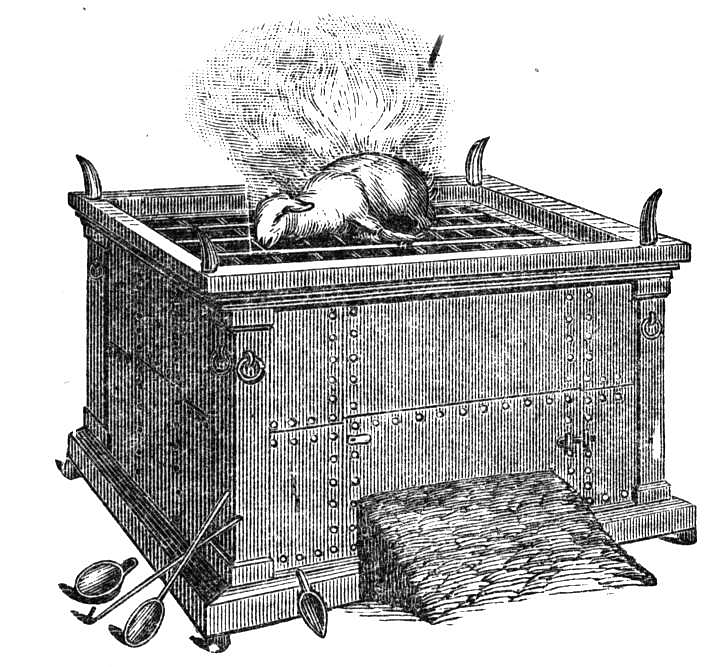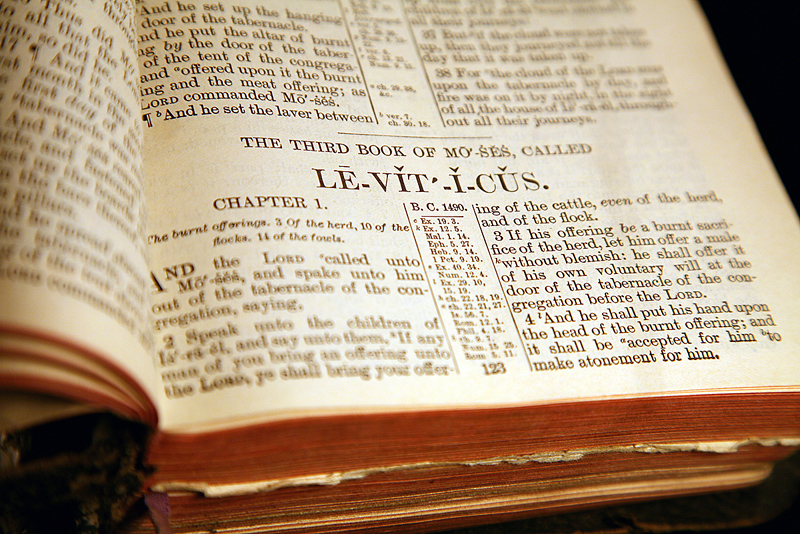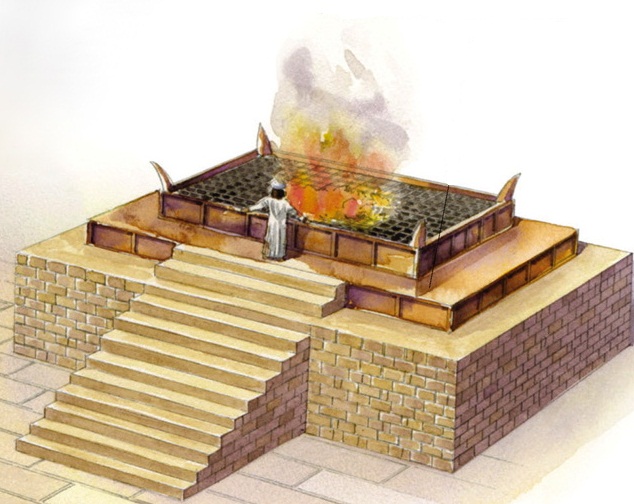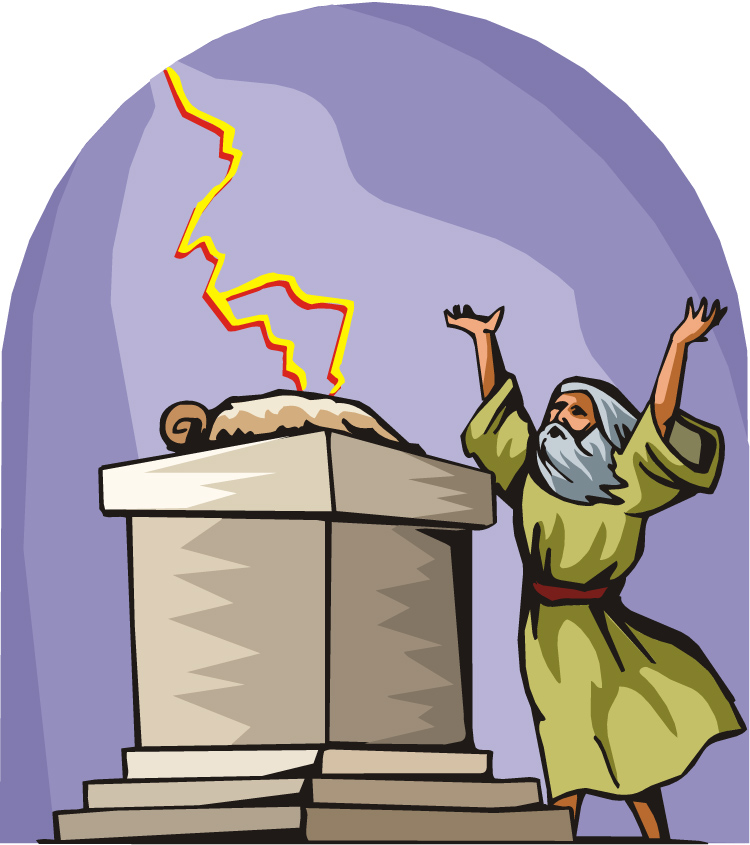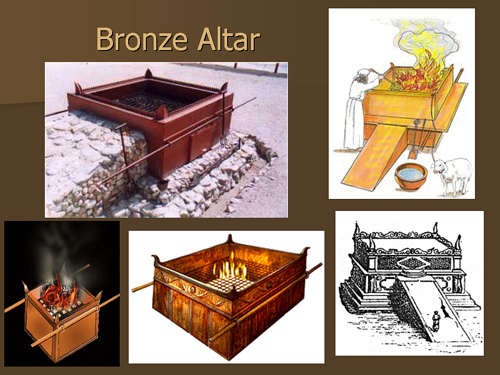
The concept of animal sacrifices may be a hard for modern people to comprehend—especially for those who are squeamish when it comes to death and blood. This ancient ritual, rooted in the nomadic lifestyles of the inhabitants of the Middle East, carried more symbolic significance for a people whose daily existence was tied to the earth and who were dependent on domestic animals for their survival. It is out of this cultural background that the biblical narrative springs and with it the ritual symbols with which the ancient people described therein could relate. With these things in mind, the following is a list showing the main reasons for YHVH’s establishment of an animal sacrificial system as a means to help man to understand spiritual lessons far beyond the actual sacrifice itself.
- The laws pertaining to the sacrificial system were added to the rest of the Torah because of sin, and were in force until the time of Yeshua the promised Seed (Gal 3:19). When and why did YHVH add them making this system incumbent upon the Israelites? This occurred after and because of the sin of the golden calf. It was then that YHVH established the Levitical priesthood and subsequently gave Israel the sacrificial system to not only show them the seriousness and grave consequences of sins, but to guide them forward on the path toward redemption and salvation.
- The Levitical system foreshadowed and pointed to the Messiah’s ultimate sacrifice (Heb 9:11–12).
- The tabernacle offerings were specifically designed to spiritually draw the offerer near to Elohim through the sacrifice of a prescribed animal (Ps 51:16–17; 50:12–15 cp. 1 Pet 2:21).
- Elohim commanded offerings to assist the offerer to better understand himself; his attitude, and his personal relationship with Elohim (e.g. Gen 3:21; 4:3–5; 8:20; 22:1–2 cp. 1 Cor 11:28).
- Altars were erected by the patriarchs in order to honor Elohim through sacrifice after having had direct contact with him (Gen 12:6–8; 13:18; 26:24–25; 35:1; 35:2–4; Exod 17:13–16; cp. Exod 20:12).
- Proper and regular sacrificial offerings kept the children of Israel in direct contact with the Elohim of the patriarchs (Exod 5:3; 10:25; cp. 1 Tim 2:5).
- To make the offerer holy (set-apart) so that he would be allowed to approach and commune with the Set-Apart Elohim of Israel (Isa 43:15; 57:15; Lev 19:2 cp. 2 Cor 6:16–18).
- Under certain circumstances, blood, as used in the Levitical system, could serve as a purification agent for both people and objects (Heb 9:18–23 cp. Luke 2:22–24).
- The blood of the animal sacrifices served to cover the offerer’s sins, thereby allowing him to draw near to the Set-Apart Elohim of Israel. However, the offerer could only be forgiven for specific sins through full repentance and by returning to Elohim’s way of life as outlined in the Torah (Lev 1:4; 4:35; 23:27–28; Heb 10:3–4; cp. Rom 4:7–8).
- The purpose of the animals offered by the Levitical priesthood served as a shadow of the blood of Messiah, which does not merely cover our sins, but removes all of the sins of the person who accepts Yeshua’s offering of himself for that sinner (Heb 9:11–12, 24–28; 1 Pet 1:18–19; Eph 5:25–27; Lev 25:47–49; Rom 5:11; John 1:29 cp. Heb 13:10–13).
Words and Definitions
(These words are the Hebrew words behind the English words offering and sacrifice as translated in the KJV):
- Asham: (Strong’s H817/TWOT 180b) meaning “guilt, offense, sin, guiltiness, trespass, fault, compensation (for offense), trespass or sin offering.”
- Chag: (Strong’s H2282/TWOT 602a) meaning “festival, feast, pilgrim-feast, festival-gathering, festival sacrifice.”
- Chatah: (Strong’s H2403/TWOT 638e) meaning “sin, sinful, sin offering, condition of sin, guilt of sin, punishment for sin, purification from sins of ceremonial uncleanness, sinner.”
- Ishshah: (Strong’s H801/TWOT 172a) meaning “burnt offering, offering made by fire, fire offering.”
- Korbawn: (Strong’s H7133/TWOT 2065e) meaning “offering, oblation, sacrifice.”
- Minchah: (Strong’s H4503/TWOT 1214a) meaning “to apportion, to bestow, gift, tribute, offering, present, oblation, sacrifice, meat or grain offering (Gen 4:3–5).”
- Necek: (Strong’s H5262/TWOT 1375a) meaning “drink offering, libation, molten image, something poured out (Gen 35:14).”
- Nedabah: (Strong’s H5071/TWOT 1299a) meaning “voluntary, free-will offering.”
- Olah: (Strong’s H5930/TWOT 1624c,d) meaning “whole burnt offering/sacrifice, ascent, stairway, steps, to go up (Gen 8:20; 22:2,3,6,7,8,13).”
- Qatar: (Strong’s H6999/TWOT 2011,2011e,g) meaning “to sacrifice, burn incense, burn sacrifices, make sacrifices smoke, incense, incense altar.”
- Shelem: (Strong’s H8002/TWOT 2401b) meaning “peace offering, requital, sacrifice of alliance or friendship, voluntary sacrifice of thanks.”
- Tenuwphah🙁Strong’s H8573/TWOT 1330b) meaning “swinging, waving, wave offering, shaking.”
- Terumah,: (Strong’s H8641/TWOT 2131i) meaning “a heave offering, any offering; an offering of grain or money, etc.; contribution, oblation.”
- Zebach: (Strong’s H2077/TWOT 525a) meaning “sacrifices of righteousness, sacrifices of strife, sacrifices of dead things, the covenant sacrifice, the Passover, annual sacrifice, thank offering.”
- Zabach: (Strong’s H2076/TWOT 525) meaning “to slaughter, kill sacrifice, slaughter for sacrifice”(Gen. 31:54; 46:1).
YHVH instituted the basic sacrificial system after the fall of man, and it served to point the way to the coming of Yeshua the Messiah, the eventual Redeemer and Savior of mankind. Later on, YHVH established a more elaborate sacrificial system and appointed the Levites to administer it. This occurred after the golden calf incident in Exodus 32 and in conjunction with the establishment of the Tabernacle of Moses. Paul makes reference to this “added law” in Galatians 3:19.
Depending on how one understands the scripture passages recording the vision of Ezekiel’s Temple (Ezek 40–48), there may or may not be a reinstitution of part of or the whole sacrificial system during the millennium. Some believe that Ezekiel’s Temple is only an allegorical picture of Yeshua’s atoning death on the cross and speaks to YHVH’s plan of salvation and therefore will never be built. Others feel that it is yet to be built.
After the fall of man, YHVH made Adam and Eve coats or garments of skins or leather (Gen 3:21). Though the Scriptures don’t tell us, we can guess these were made of leather from a kosher animal such as a cow, sheep or goat. In other words, YHVH probably sacrificed a kosher animal like a lamb to cover their physical and spiritual nakedness. This would have marked the beginning of the sacrificial system and thus pointed to Yeshua’s atoning death on the cross through his shed blood — the Lamb slain from the foundation of the world.
The next occurrence of a sacrifice was that of righteous Abel in Genesis chapter four. After that, animal sacrifices become a common occurrence with the male head of each family acting as the officiant or priest for his family. It was not until the golden calf incident (Exod 32) that the responsibility of the male head of the family to perform sacrifices passed to the Levites, thus, initiating the Levitical priesthood with its sacrificial system.
Sacrifices are no longer necessary, since Yeshua our Messiah offered his body as the ultimate sacrifice for our sins, once and for all, forever (Heb 10:10–21).


